2.7.14 Spirit Guide
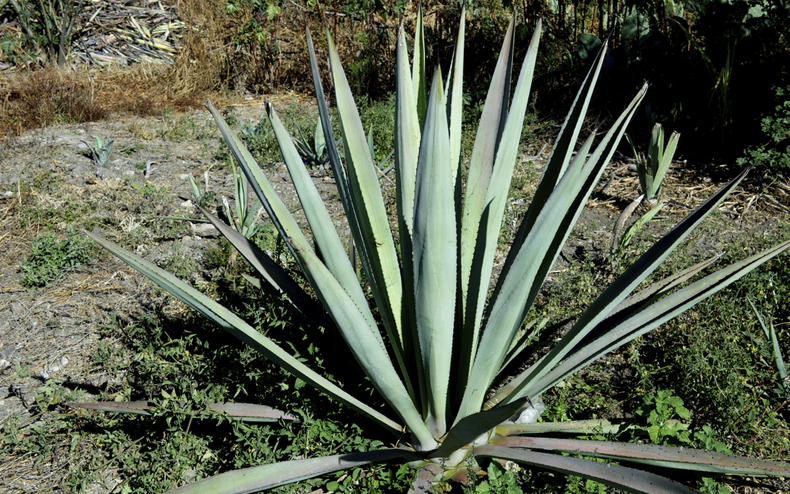
Until you delve into the world of mezcal, it has a sort of hazy outlaw connotation, what with the worm and all. It's easy to imagine it as the drink of choice for that bad-ass bandido with the glinting gold tooth and a bandolier of ammo criss-crossed over his chest. But then you travel into the heart of artisanal mezcal terrain and you discover that this mystical spirit has a complexity akin to that of wine, with a similar display of terroir. A product of the ancient Aztecs, mezcal is thought to derive from an even older drink known as pulque, the fermented sap of the agave plant that is milky and lightly alcoholic. Once cooking and distilling entered the process, the flavor and potency of pulque were amplified into what is known as mezcal. It has been made for centuries from the many varieties of the agave plant or, as it's called in Mexico, maguey. This is not actually a cactus, but a type of succulent that includes the espadín, pictured above. During our recent trip to Oaxaca, we were lucky enough to get a glimpse into artisanal mezcal production under the tutelage of local connoisseur and scholar, Ulises Torrentera. A writer who fell in love with the mysterious poetry of small-batch mezcal, Ulises has a deep collection of carefully sourced spirits he serves at his groovy little mezcal bar in Oaxaca City, In Situ. Spending the day with him really left us in high spirits.
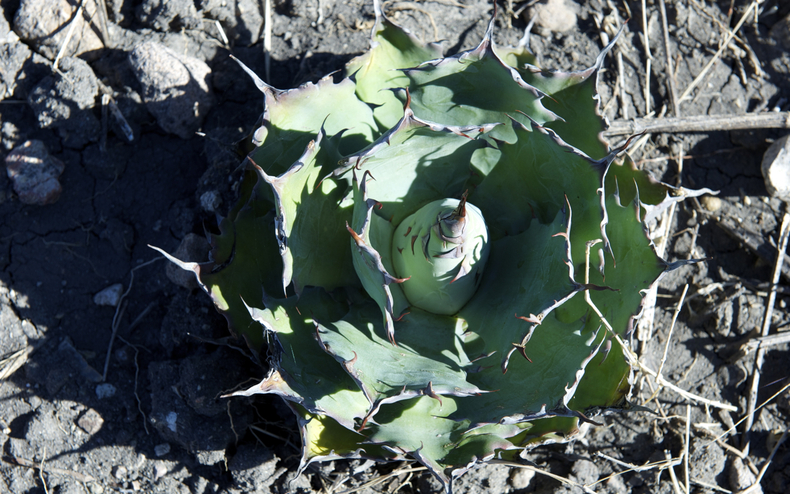
Unlike the espadín, other agaves, like the parrasana, above, have large rosettes of thick, fleshy leaves ending in sharp, spiny points. Many agaves are harvested from the wild—these are known as silvestres—but they are also cultivated. Most reach maturity at around 10 years and produce a flower stalk, which is removed so the plant will redirect its growth effort to the central stalk. This swells into a large bulbous shape, weighing between 25 and 100 pounds, that contains a sweet, juicy pulp.
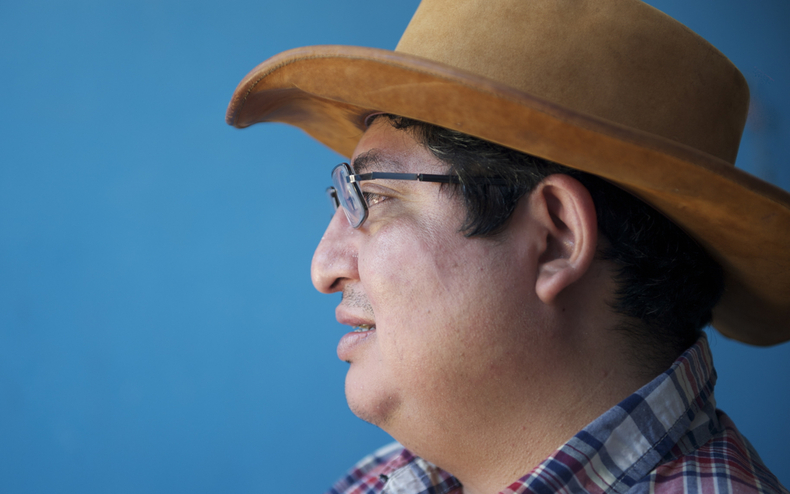
Ulises took us to see a couple of mezcal palenques, so we could see different techniques. He's a humble guy whose low-key manner belies the fact that he is a real authority on the culture of artisanal mezcal and the author of a comprehensive and scholarly book on the subject (Mezcalaria: The Cult of Mezcal).
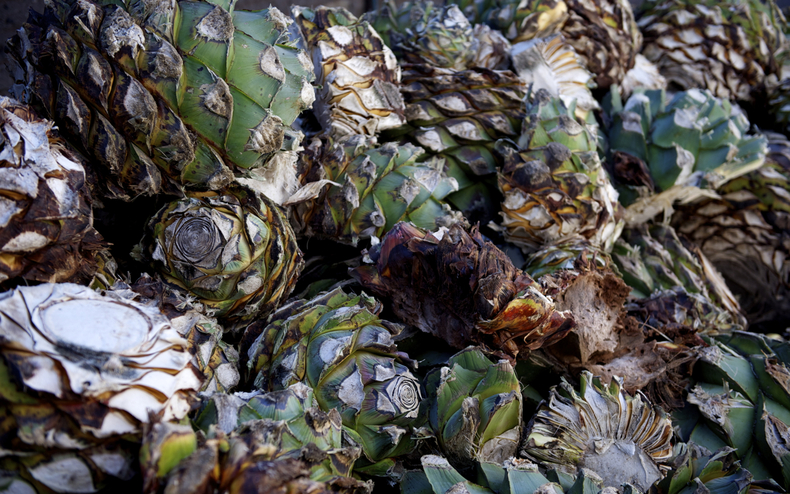
When denuded of their leaves, the agave hearts resemble giant green pineapples, and thus are called piñas.
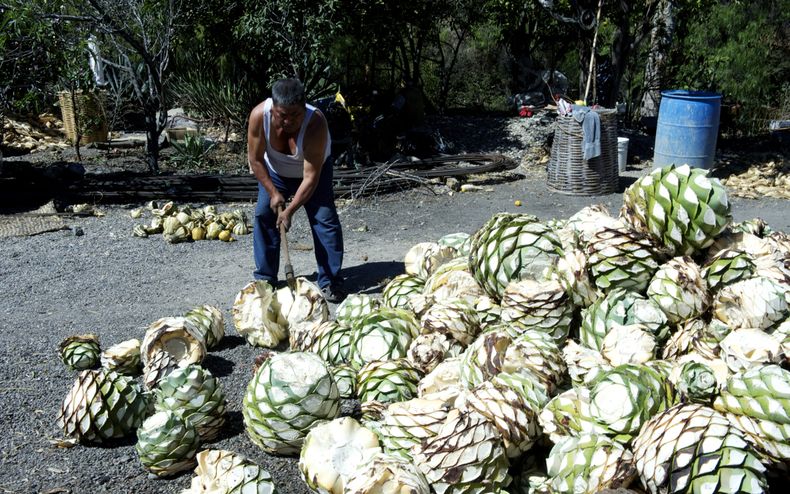
The palenquero (mezcal maker) splits the hearts with an axe or machete to prepare them for the cooking stage.
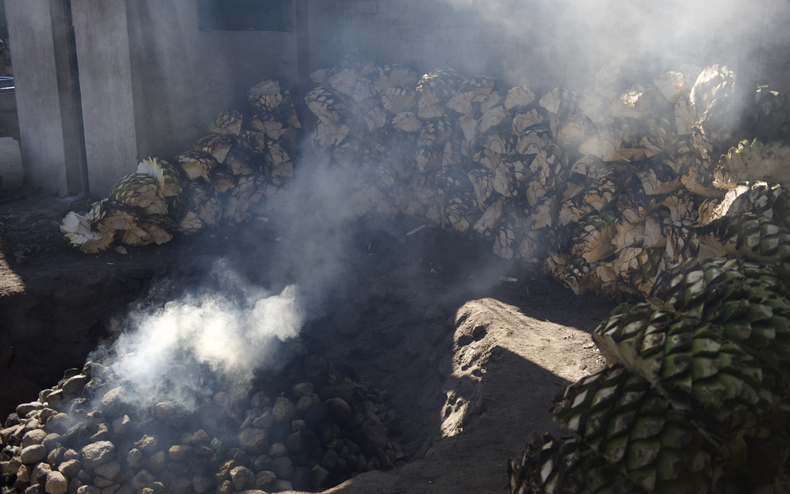
In a process that has changed little over the centuries, the nectar-rich hearts are piled into a fire pit fueled by wood charcoal and mounded high with stones. Several days later, their flesh emerges syrupy and infused with the rich aroma of wood smoke.

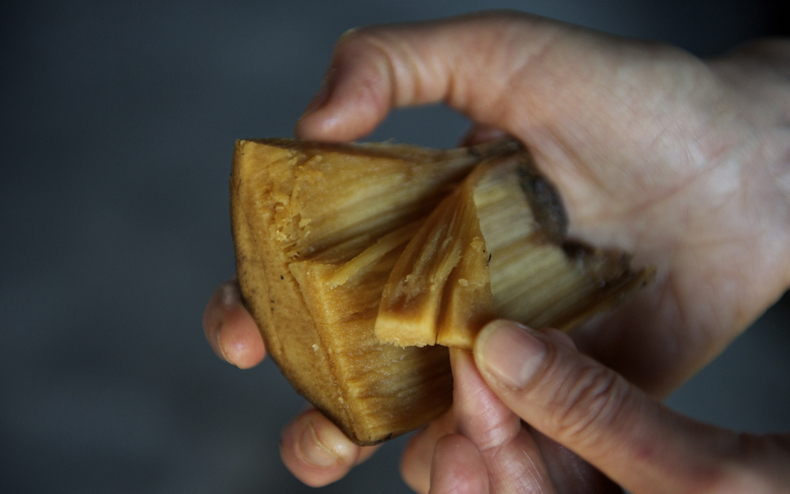
One of the highlights of this day was getting to taste the roasted heart of the maguey. You pop a piece in your mouth and chew on the fibrous pulp which exudes a sweet nectar known as aguamiel (honey water). It did taste of honey, but also of exotic fruit, earth and smoke. The mother of one of the palenqueros we met pounds this pulp into the cornmeal masa with which she makes the big local tortillas known as tlayudas. We bought a bag that had been dried and cut into chips and they were delicious with a hint of sweetness and totally addictive.
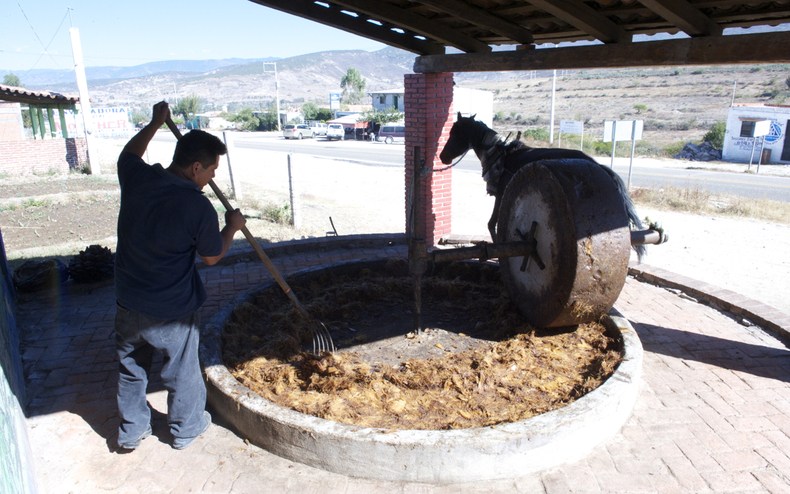
Once removed from the fire pits, the piñas are crushed, most traditionally with a stone wheel drawn around a circular trough by a horse or mule. This makes it easier to shred them and extract the aguamiel.
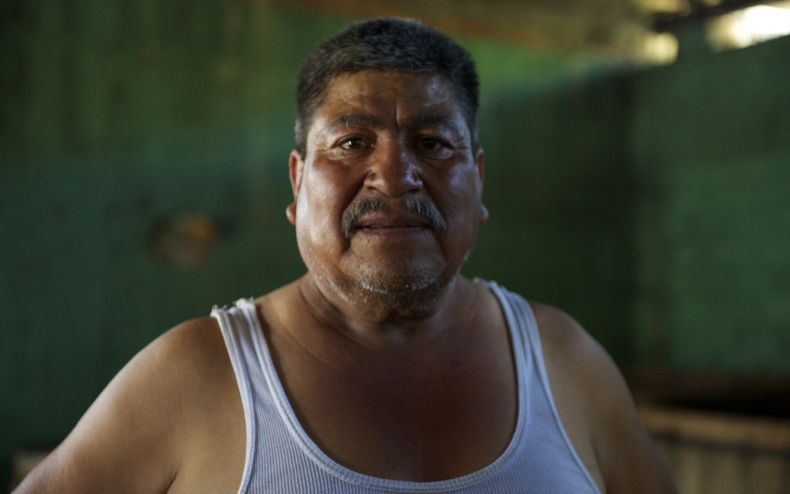
For the palenqueros, making mezcal is a passion and a way of life. It is a skill handed down through the generations and the process is still very much what it was during pre-Columbian times.

After the shredded piñas ferment in big wooden vats, the liquid passes into either a clay still, as above...
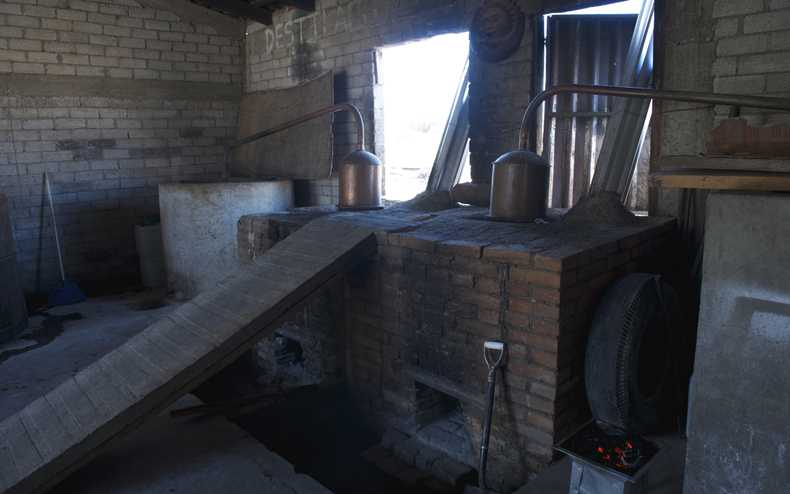
...or a copper still, like one of these. Sometimes it passes through the stills again, for a second refining distillation. It can then be bottled right away, as joven (young), or left to rest in barrels, sometimes buried underground for up to 4 years. It is then offered as reposado (rested) and añejo (aged). The more it ages, the mellower it becomes, though this often blunts the very specific flavors for which mezcal is prized.

We were able to sample some mezcal just as it emerged from the copper still. What comes out first is called puntas, and has a very high alcohol content; this is followed by the colas, which means "tails." It is said that the way mezcal affects the palate—and also the way it warms the chest, throat and mouth—is quite different than any other alcohol.
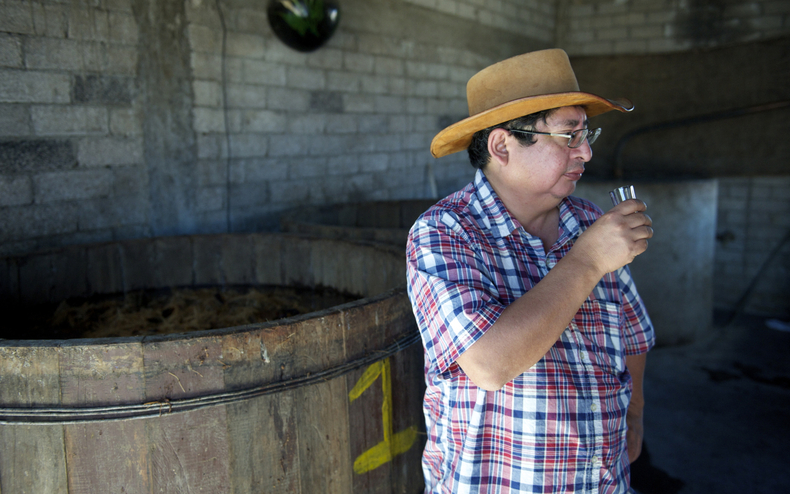
Small-batch artisanal production means that each mezcal, and indeed each batch, has a distinct character and singular purity that varies from village to village and from one palenque to another. Variations in well water and technique, whether the still is copper or clay, the type of maguey and the soil in which it grows—all these factors influence the final product. The spirits share a common bond but express very distinct characters.
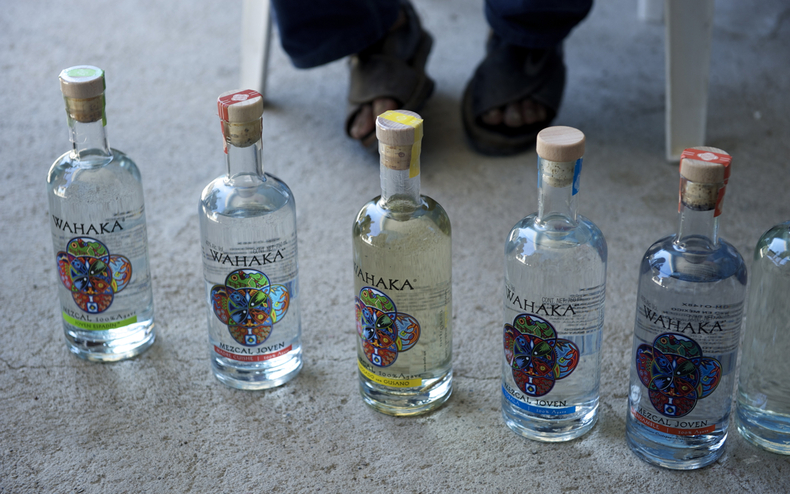
Similar to fine tequila, superior mezcal can be enjoyed on its own, without lime or salt—in fact, that's the only way locals and connoisseurs drink it, typically from a rough clay cup. I tried a number of cocktails made with mezcal and I'm not too much of a snob to confess that I actually prefer them to sipping it solo.
One of the palenques we visted in San Dionisio Ocotepec, about half an hour outside Oaxaca City, is a father-son operation that is professionally bottled under the name Wahaka and beginning to seek wider distribution. The increasing popularity abroad of artisanal spirits in general, and mezcal in particular, is a very positive development that may help support the dwindling number of palenqueros throughout Mexico and encourage younger generations to maintain the traditional ways.
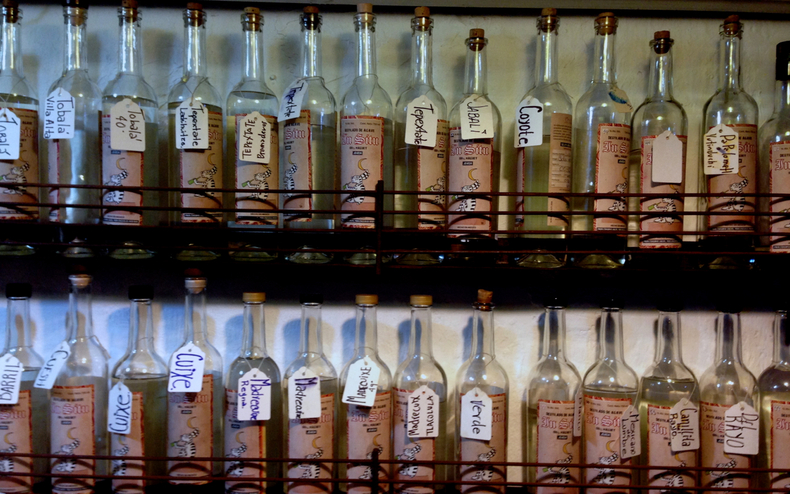
Of course Ulises is really doing his part to keep the slow-distlling tradition alive. In Situ (named in homage to artisanal mezcal's deep ties to its place of production) offers more than a thousand varities of small-batch mezcal, all funneled directly into the bar's own bottles, which are hand labeled with the crucial details, including the town of origin, the palenquero's name and the variety of maguey used. For your own foray into mezcal, start with something approachable and reasonably priced, like Vida from Del Maguey.
Oh, and about that worm? It's actually the larva of a moth that can infect the maguey plant. Some people consider adding it to bottled mezcal as pure gimmickry, though others claim it imparts a particular flavor. All I know for sure is that this same "worm" is toasted, ground and combined with salt for a very popular condiment (sal de gusano) that is sold everywhere in Oaxaca City. Having tried it a few different ways—on the rim of a cocktail, on quesadillas, on the tip of my finger—I can say that it does lend a certain earthy umami that is not unpleasant. You can get your hands on some here, and use it in place of the salt in the cocktail recipe below.
As you raise your glass, remember the Mexican saying that really sums it all up: Para todo mal, mezcal, y para todo bien, también. For everything bad, there is mezcal; and for everything good, the same.
Oaxaca Cooler
- — 1 teaspoon sea salt
- — 1 teaspoon chile powder
- — 2 lime wedges
- — 5 slices peeled cucumber
- — 2 ounces mezcal
- — 1 1/2 teaspoons agave nectar
Mix the salt and the chile powder together on a small plate. Run a lime wedge around the rim of your glass, then dip the moistened rim in chile salt to coat.
Combine the lime wedges, cucumber and a pinch of chile salt in the bottom of a shaker and muddle well. Add mezcal, agave nectar and ice. Shake vigorously and strain into the prepared glass over fresh ice.
 Download Recipe
Download Recipe






10 Comments